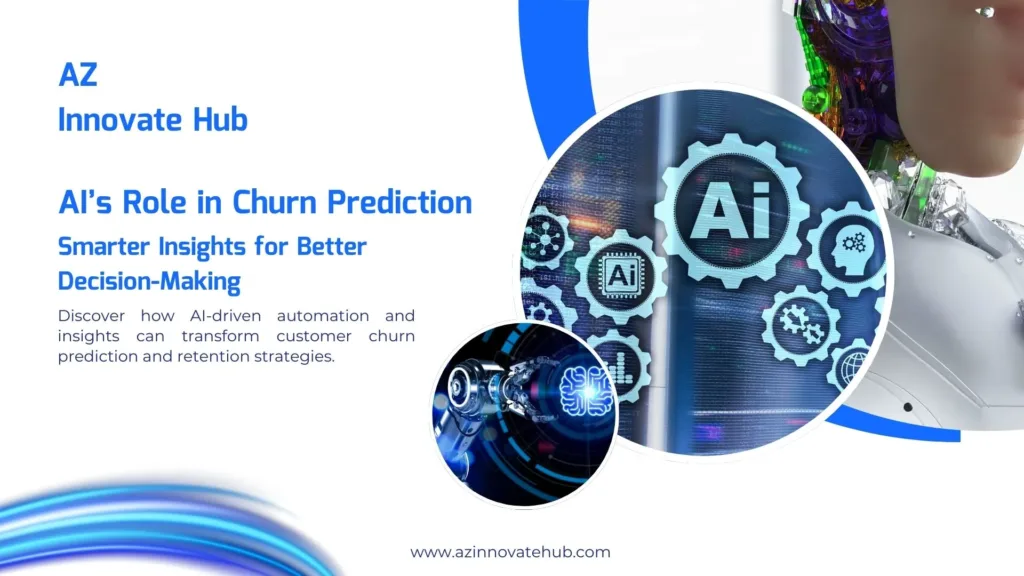
Introduction: AI-Powered Customer Churn Prediction
In the contemporary business landscape, where customer loyalty is a prized yet fragile commodity, the ability to anticipate and mitigate customer churn has become paramount. While a degree of customer attrition is an unavoidable reality for any enterprise, the strategic deployment of artificial intelligence (AI) offers unprecedented capabilities to forecast and manage this phenomenon. This article delves into the intricacies of customer churn prediction using AI, exploring effective strategies, potential pitfalls, and the transformative impact of this technology on customer retention and revenue generation.
Deciphering Customer Churn: Definitions and Distinctions
At its core, customer churn signifies the erosion of a company’s customer base over a defined period. This metric quantifies the number of customers who sever their relationship with the organization, encompassing both individual consumers and corporate clients. Whether a business operates on a subscription model or facilitates point-of-sale transactions, understanding the dynamics of customer churn is crucial for sustainable growth.
It’s important to distinguish between two key aspects of churn:
- Customer Churn Rate: This metric represents the percentage of customers who discontinue their engagement with the company within a given timeframe.
- Revenue Churn Rate: This metric, on the other hand, reflects the percentage of revenue lost due to customer attrition during a specific period.
While both metrics are interconnected, they offer distinct insights. Customer churn rate highlights the loss of customer relationships, while revenue churn rate quantifies the financial impact of that loss.
The pursuit of a zero churn rate is often an unrealistic aspiration. Market forces, evolving customer needs, and competitive pressures inevitably contribute to some level of attrition. The acceptable or “target” churn rate varies significantly across industries, influenced by factors such as market maturity, competitive intensity, and the nature of the products or services offered.
The Predictive Power of AI: Anticipating Customer Defection
Customer churn prediction involves leveraging data analysis techniques to forecast which customers are most likely to abandon their relationship with a business. This proactive approach hinges on the identification of key indications that signal a customer’s potential departure. These indicators, often gleaned from customer interactions with the company’s products or services, provide valuable insights into customer sentiment and behavior.
Predictive AI elevates this process by automating the analysis of vast datasets and identifying subtle patterns that might escape human observation. Unlike traditional methods that rely on historical data to understand past churn, AI-powered models can incorporate real-time data and dynamic customer behavior to predict future churn with greater accuracy. This enables business to intervene proactively and implement targeted retention strategies.
The significance of customer churn prediction lies in its ability to shift the focus from reactive damage control to proactive relationship management. By anticipating churn, businesses can:
Benefits of Customer Churn Prediction
- Reduce Customer Acquisition Costs: Retaining existing customers is generally more cost-effective than acquiring new ones.
- Enhance Customer Lifetime Value: By extending customer relationships, businesses can maximize the revenue generated from each customer.
- Identify Areas for Improvement: Analyzing churn patterns can reveal underlying issues with products, services, or customer experience.
Industry Benchmarks: Understanding Contextual Variations
Customer churn rates are not uniform across industries. Factors such as competition, customer expectations, and the nature of the products or services offered influence churn rates significantly. Therefore, it is crucial to consider industry benchmarks when evaluating a company’s churn performance.
Typical Annual Churn Rates Across Various Sectors
- Telecommunications: This sector often experiences relatively high churn rates, typically ranging from 30% to 35%. This can be attributed to factors such as intense competition, price sensitivity among consumers, and the impact of customer experience on loyalty.
- Software as a Service (SaaS): SaaS companies commonly face annual churn rates between 32% and 50%. Key drivers of churn in this sector include customers not achieving their desired outcomes, product limitations, pricing concerns, and competitive offerings.
- Subscription Services (Streaming): The subscription industry, particularly streaming services, exhibits considerable churn, with average rates around 37%. Factors such as content availability, pricing, and the ease of switching services contribute to this volatility.
- Banking: The financial sector presents a unique scenario, with churn rates around 19%. Customer service, trust, and convenience play critical roles in customer retention in this industry.
- Retail: E-commerce, in particular, often faces high churn rates, exceeding 51%. Customer expectations for seamless experiences, competitive pricing, and efficient delivery contribute to this challenge.
These figures highlight the importance of understanding industry-specific dynamics when analyzing and addressing customer churn.
The Mechanics of Churn Calculation: A Quantitative Approach
Calculating customer churn rate involves a straightforward formula:
(Number of Customers Lost During a Period / Number of Customers at the Start of the Period) * 100
For instance, if a subscription service began the month with 10,000 subscribers and lost 100 subscribers during that month, the monthly churn rate would be 1%.
However, quantifying churn is only the first step. Unraveling the “why” behind customer attrition requires a deeper dive into customer behavior and segmentation.
Cohort Analysis: Illuminating Customer Journeys
Cohort analysis is a valuable technique for understanding churn patterns. It involves grouping customers based on shared characteristics, such as acquisition date or behavior patterns, and tracking their retention over time.
- Acquisition Cohorts: Analyzing cohorts based on when customers were acquired can reveal patterns in churn throughout the customer lifecycle.
- Behavioral Cohorts: Grouping customers based on their actions and interactions with the company can provide insights into the specific behaviors that correlate with churn.
By leveraging cohort analysis, businesses can gain a more nuanced understanding of customer attrition and identify opportunities for targeted intervention.
AI's Role in Churn Prediction: Automation and Insight
AI has revolutionized customer churn prediction by automating the complex processes of data collection, analysis, and pattern recognition. Traditional methods often struggle to handle the volume and complexity of customer data, leading to inefficiencies and potential inaccuracies.
AI-powered solutions offer several advantages:
- Automation: AI algorithms can automatically analyze vast datasets, saving time and resources.
- Accuracy: AI models can identify subtle patterns and correlations that might be missed by human analysts.
- Speed: AI can generate churn predictions in real-time or near real-time, enabling timely intervention.
- Objectivity: AI algorithms are less prone to bias than human analysts, leading to more objective and reliable predictions.
AI algorithms can automate segmentation and cohort analysis, enabling businesses to gain deeper insights into the factors driving churn.

A Strategic Framework for AI-Driven Churn Prediction
To effectively leverage AI for churn prediction, businesses should follow a structured approach:
- Defining Churn Prediction Goals: Clearly articulate the objectives of churn prediction. Define what constitutes an “active” customer, the desired prediction timeframe, and the frequency of forecast updates.
- Strategic Customer Segmentation: Implement robust customer segmentation strategies to categorize customers based on relevant factors such as demographics, behavior, and engagement levels. This enables the AI model to identify patterns within specific groups.
- Data-Driven Pattern Recognition: Utilize AI algorithms to analyze segmented data and identify patterns that indicate a high likelihood of churn. These insights can reveal underlying issues and opportunities for proactive intervention.
- Prioritizing Retention Efforts: Evaluate the value of different customer segments and prioritize retention efforts accordingly. Focus on retaining high-value customers who are at risk of churn, as their loss would have a significant impact on revenue.
- Continuous Monitoring and Refinement: Regularly monitor the performance of the AI churn prediction model and refine it as needed. Incorporate new data and adjust model parameters to ensure accuracy and effectiveness.
Strategies for Churn Mitigation: Harnessing AI for Retention
While predicting churn is valuable, the ultimate goal is to prevent it. AI can also play a crucial role in developing and implementing effective churn mitigation strategies:
- Comprehensive Customer Understanding: Leverage AI-powered analytics tools to gain a 360-degree view of each customer. Track their interactions, preferences, and feedback to identify potential areas of concern.
- Proactive Education and Support: Provide customers with the resources and support they need to succeed with your products or services. AI can help identify customers who are struggling and trigger proactive outreach.
- Targeted Audience Alignment: Ensure that your marketing and sales efforts are targeting the right audiences. AI can help identify customer segments that are most likely to derive value from your offerings.
Personalized Engagement Initiatives: Engage customers proactively with personalized offers, recommendations, and communications. AI can automate these interactions, enhancing customer experience and loyalty.
Real-World Success: JP Morgan Chase
JPMorgan Chase, a leading financial services company in the USA, successfully implemented AI-driven customer churn prediction. By analyzing transaction data and customer records, they identified potential churn threats and reduced customer churn by 10%. This was achieved through:
AI-Driven Insights
- Customer Behavior Analysis: AI models detected early warning signs in customer behavior, enabling proactive retention strategies.
- Personalized Interventions: JPMorgan Chase tailored offers and services to individual customers, strengthening relationships and reducing churn.
Benefits
- Improved Customer Retention: AI-driven churn prediction helped JPMorgan Chase retain valuable customers and reduce revenue loss.
- Enhanced Customer Experience: Personalized interventions and targeted marketing efforts improved overall customer satisfaction.
Navigating Potential Pitfalls: Ensuring Effective Churn Management
While AI offers immense potential for churn prediction, it’s crucial to be aware of potential pitfalls:
- Model Neglect: Failing to update and maintain the AI model can lead to inaccurate predictions as customer behavior evolves. Continuous monitoring and refinement are essential.
- Neglecting Measurement: It’s vital to track the impact of churn reduction strategies and measure their effectiveness. This enables businesses to optimize their efforts and demonstrate ROI.
Inefficient Resource Allocation: Avoid spreading resources too thinly across all customer segments. Prioritize high-value customers and segments with the greatest potential for retention.
Conclusion: Embracing AI for Sustainable Customer Relationships
Customer churn is an inevitable challenge for businesses, but AI offers powerful tools to predict, understand, and mitigate its impact. By adopting a strategic approach to AI-driven churn prediction, businesses can enhance customer retention, improve customer lifetime value, and drive sustainable growth. As AI technology continues to evolve, its role in shaping effective customer relationship management strategies will only become more prominent.



